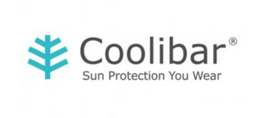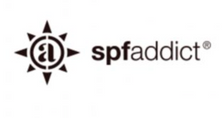
Prevent
Avoiding Skin Damage from UV Rays is the Most Important Thing We Can Do
The damage that leads to adult skin cancers starts in childhood and teenage years, as people are likely to receive about 80% of their lifetime sun exposure during the first 18 years of life.
No tan is a safe tan.
Please review our Prevention Resources below.
Prevention Knowledge:
Skin Self-Examination
Back to Top
It is very important to check your skin regularly in order to detect any abnormalities. Make sure to look under your shoulders, your nails, your neck, your ears and your head.
If you detect any changes or any moles that are asymmetrical or have irregular borders, uneven colours, or a larger diameter than 6mm, you need to report it to your doctor as soon as possible. These could be signs of skin cancer.
Steps of a Skin Cancer Self-Exam
-
Using a mirror in a well lit room, check the front of your body -face, neck, shoulders, arms, chest, abdomen, thighs and lower legs.
-
Turn sideways, raise your arms and look carefully at the right and left sides of your body, including the underarm area.
-
With a hand-held mirror, check your upper back, neck and scalp. Next, examine your lower back, buttocks, backs of thighs and calves.
-
Examine your forearms, palms, back of the hands, fingernails and in between each finger.
-
Finally, check your feet – the tops, soles, toenails, toes and spaces in between.

Skin Check Guide
Checking your skin regularly is one of the easiest things you can do for your health. A skin check is a good way to detect early skin changes that may mean melanomas and skin cancers.
You should perform a skin exam on yourself once a month. Additionally, it is a good idea to have your skin examined by a health care professional about once a year. When performing your monthly skin exam, look for any abnormal skin growth or any change in the colour, shape, size, or appearance of a skin growth. Check for any area of injured skin (lesion) that does not heal. Have your spouse or someone such as a close friend help you monitor your skin. A careful skin check may identify suspicious growths that may be cancer or growths that may develop into skin cancer (precancers). Adults should examine their skin regularly. Skin cancer often appears on the torso of men and on the legs of women.
Conduct a monthly self-examination, or 'Skin Check,' using our Alexa app.
Skin Check with Amazon Alexa
A careful skin check may identify suspicious growths that may be cancer or growths that may develop into skin cancer (precancers). Adults should examine their skin regularly. Skin cancer often appears on the torso of men and on the legs of women.
The Global Coalition for Melanoma Patient Advocacy has created a free voice-activated app available on both Amazon’s Alexa and the Google Assistant platforms. The app guides people through what to look for, and the seven steps for conducting a full-body skin exam.
The assistant finishes by offering to set a recurring monthly reminder for the exam.
Once enabled, users can simply ask Alexa or Google: “Open Skin Check”
For more information, you can also CLICK HERE to view an instructional skin check video created by our friends at the Global Melanoma Coalition.

Get Skin Help
If you find a spot you’re not sure about and don’t have a Dermatologist already, check out the GetSkinHelp mobile app: The GetSkinHelp mobile app allows individuals to access the SkinAI™ technology – an embedded artificial intelligence that allows people to quickly analyze for a selection of skin diseases, including skin cancers – and schedule video appointments with a licensed Canadian doctor who can help determine next steps. From there, the doctor might suggest an in-person appointment or simply write a prescription, which will be sent to the patient’s home or pharmacy. What is most important is that the app gets a person in front of a doctor faster than traditional means.
NOTE: The information on the Save Your Skin website is not intended to replace the medical advice of a doctor or healthcare provider. While we make every effort to ensure that the information on our site is as current as possible, please note that information and statistics are subject to change as new research and studies are published.

Skin Cancer in People of Colour
Back to Top
Skin cancer does not discriminate. People of all skin tones, including those with brown or black skin, get skin cancer. Even if you never sunburn, you can still get skin cancer
Melanin Myths - Black Skin Misconceptions
This webinar addresses common misconceptions about Black skin and health, featuring Dr. Yinka Akin-Deko, a Family Physician and dermatology expert, alongside Sharon Davis-Murdoch, Co-President of the Health Association of African Canadians. Together, they explore the importance of health equity and culturally competent care for Black and racialized communities.
Awareness
Skin cancer is less common in people of colour, but when it does occur, it’s often diagnosed at an advanced stage and has a worse prognosis. This can be deadly when the person has melanoma. Treatment for any type of skin cancer can be difficult in the late stages. According to experts, there’s a lower public awareness overall of the risk of skin cancer among people of colour.
Also, from the perspective of health-care providers, there’s often a lower index of suspicion for skin cancer in patients of colour, because the chances of it actually are smaller. So these patients may be less likely to get regular, full-body skin exams.

Presentation
In people of colour, skin cancer often develops on parts of the body that get less sun like the soles of the feet, lower legs, and palms, which makes detection more difficult.
-
Up to 60 – 75% of melanoma in people of colour occurs on the palms of the hands, soles of the feet and the nail areas.
-
This cancer may also begin around the anus, or on the genitals.
The risk factors for acral melanomas are not fully understood — acral meaning on the hands and feet — but sun is less likely to be a factor.

In melanomas on the whole, UV radiation is certainly a major risk factor, and there are plenty of UV-induced melanomas and squamous cell carcinomas in people of colour, who can have a wide range of complexions, from very fair to very dark. But the proportion of skin cancers that occur in non-sun-exposed sites is greater in darker-skinned populations.
About 50% of basal cell carcinomas (BCCs) are pigmented (meaning brown in colour) in darker-skinned patients. If you look at the typical photos of BCCs used in educational materials — most of which focus on light skin — you’ll see a pink, pearly growth that may or may not be crusted. What you’ll almost never see is an image of a brown, slightly translucent lesion. Yet about half of BCCs in darker-skinned patients are brown, or pigmented, and thus easier to miss.
Late Diagnosis
Skin cancer is less common in people of colour, but when it does occur, it’s often diagnosed at an advanced stage and has a worse prognosis. This can be deadly when the person has melanoma. Treatment for any type of skin cancer can be difficult in the late stages.
-
About 52% of Black people and 26% of Hispanics find out they have melanoma when it has already spread, compared with 16% of White people.
-
One study, found an average five-year melanoma survival rate of only 67% in Black people versus 92% in White people.

Gap in Medical Knowledge
There is a distinct lack of racial diversity in medical images of skin conditions. To address this gap, we have been working with a medical student to help collate resources that depict skin cancer, and other skin conditions, in people of colour. View the full document here
Sources
American Academy of Dermatology Association, https://www.aad.org/
WebMD, https://www.webmd.com/
Gloster HM, Neal K. Skin cancer in skin of color. J Am Acad Dermatol 2006; 55:741-60:
https://www.jaad.org/article/S0190-9622(05)02730-1/fulltext
Sun Safety Apparel
Back to Top
Sun safety apparel is one of several ways to prevent sun exposure. All clothing that covers the skin is somewhat preventative, but UV protective clothing has been specially designed to filter out UV rays and offer extra protection.
Our Partners
The below sun safety apparel options are provided as suggestions only and are not affiliated with or endorsed by Save Your Skin Foundation.
Sources
Sources: Health Canada – Canadian Cancer Society – Shade Foundation – BC Cancer Foundation
NOTE: The information on the Save Your Skin website is not intended to replace the medical advice of a doctor or healthcare provider. While we make every effort to ensure that the information on our site is as current as possible, please note that information and statistics are subject to change as new research and studies are published. Listed above are a few sources of information and support you might find useful. These groups are not necessarily connected to Save Your Skin Foundation. We are providing the links as useful sources of information but do not monitor content for accuracy and quality.











